Last Updated: October 7, 2019 Tour My India
There was a time when pilgrimage was considered a duty to be performed by the god-fearing souls at old age, and adventure used to be considered an activity for the zealous persona. But what if we start experimenting with our prevailing norms and ideas and redefine the idea of pilgrimage in our own way? I am sure the Gen-Next will second me and would love to explore the best temples in Indian Himalaya walking on its undulating treks. So, before packing the backpack let’s find out the best Himalayan temples which can be accessed through trekking.
Kedarnath Temple: Where Mandakini Rinses the Mountain-Base
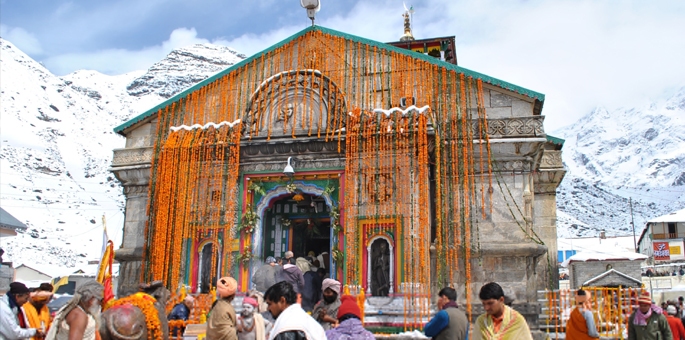
One of the quartet of the famous ‘chota chardham’ pilgrimage, Kedarnath is the abode of Lord Shiva and named after the famous King Kedar. It is the remotest of the four pilgrimage sites known as Kedarnath, Badrinath, Yamunotri and Gangotri. The temple opens at Akshay Tritiya on the month of April-May and closes on Bhai Duj on the month of October. As the fall of snow starts getting heavier from October end, the idols are taken to a place near Guptkashi called Ukhimath. For the next six months the Utsava Murty is worshipped there. The scenic beauty of this temple is enhanced by the cascading river Mandakini that snakes through the foothill of the mountain on which the temple is located.
The Trek: There were two different routes to reach the temple, but the devastating flood of 2013 damaged one of them. Later on, to make the temple accessible two different routes were constructed, one of which starts from Sonprayag and leads to Kedarnath via Vasuki Tal. The trek is around 22-24 km long and is considered to be less demanding; it is also the shortest route.
Best Time to Visit: May and June, September and October
Yamunotri Temple: A Dip to Attain Moksha
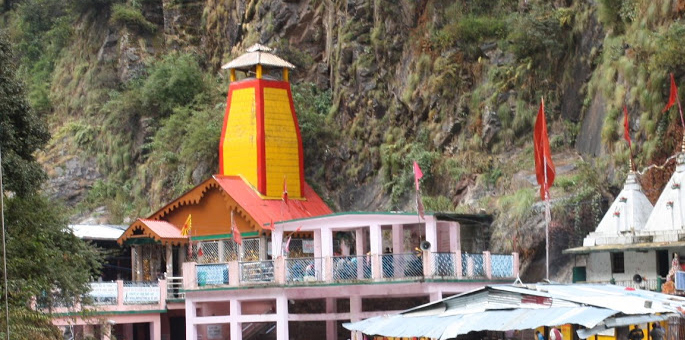
The seat of the deity Yamuna, the princess of Yama, Yamunotri is the temple that is believed to be the source of River Yamuna. The temple is built at an elevation of 3293 m and visited by thousands of devotees who seek relief from their sins by taking holy baths in its sacred ponds like Suryakund and Gaurikund. Both these ponds contain warm water where devotees take bath to get treated by the naturally warm water. After paying homage to the deity people get down to the Surya Kund and dip rice tied in fresh cloth to cook them in its boiling water. This cooked rice is taken back home as prasadam of deity Yamuna.
The Trek: The trek to the temple starts from Hanuman Chatti (6km) and reaches the temple via Janki Chatti (4km). The trek is usually rugged and enclosed by dense forests. While trekking, one can witness a number of waterfalls rolling from the nearby mountains. The weather is cool while the abundant greenery leaves a soothing effect on the eyes.
Best Time to Visit: May and June, September and October
Kalpeshwar Temple: Witness the Matted Lock of Shiva
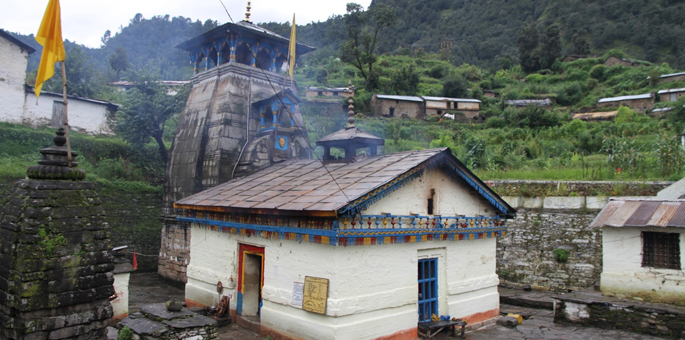
One of the Panch Kedars, and the seat of Lord Shiva, Kalpeshwar is the temple where the matted lock of the supreme God is worshipped. One of the best places for meditation in Uttarakhand, this is the only temple of Panch Kedar that remains open throughout the year. The matted tresses of Lord Shiva can be traced on the rock face which bows down overhead to make the cave more mystical. This is the reason why Lord Shiva is worshipped here as Jateshwar or Jatadhar Shiva. A small Shiva Lingam is worshipped in the main temple whereas, the matted lock of Shiva can be found in a nearby cave. The temple attracts more attention for being located on the way to Badrinath and every year thousands of tourists throng here. The temple vicinity encompasses a Kalpabriksha (a tree) which is believed to have a divine power.
The Trek: The temple is located at a height of 2134 m above sea level and can be reached by trekking from Helang. Helang to Urgam is a 10 km trail and it is a motorable trek. From Urgam to Kalpeshwar, the trek is 2 km long. The views of the lofty mountain peaks of Nanda Devi, Trishul and Nanda Ghunti are breathtaking and overwhelm the traveler.
Best Time to Visit: All through the year
Rudranath Temple: Witness the Mask-Wearing Deity
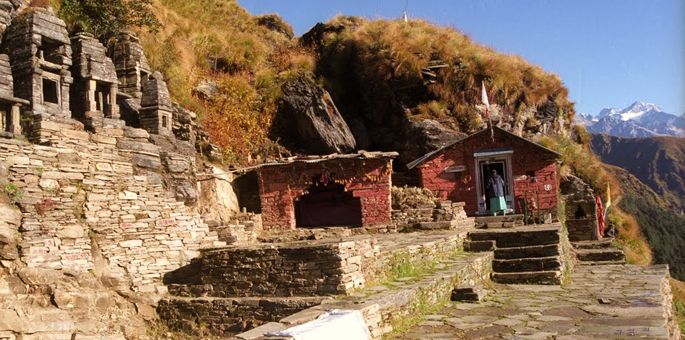
One of the Panch Kedars in the lap of the Himalaya, Rudranath is the temple where Rudra, the angry incarnation of Lord Shiva is worshipped with complete devotion. It is the place where during the days of the Mahabharata, the face of Shiva, who was in the disguise of a bull dropped here. The face of the deity is worshipped here as Neelkantha Mahadev. Shiva’s idol has a mask covering and it is taken off by the priest in the morning while arranging a royal bath for the deity. To attend this auspicious event, it’s better to leave early morning from your nearest accommodation.
The Trek: The trek starts from Mandal and the climb slowly grows steeper. Further the trek passes through Panar Bugyal via Litti Bugyal. From Panar to Rudranath it is approx an 8 km long trek and the journey is not tiresome. However, a minimum of 3 days will be needed to cover this trek.
Best Time to Visit: March to June
Tungnath Temple: World’s Tallest Seat of lord Shiva
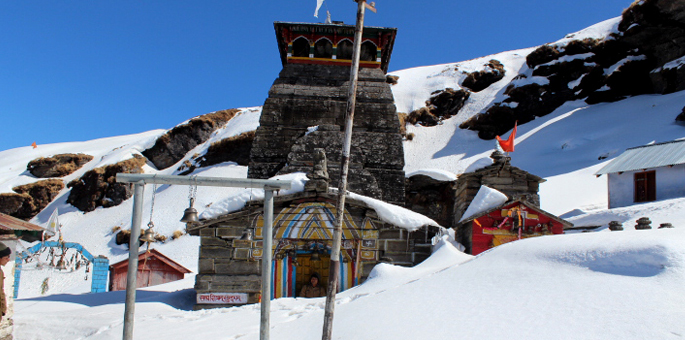
The highest known Shiva temple in the world, Tungnath attracts the attention of pilgrims for being a part of the Panch Kedar. It is located in Chandranath Parbat in Rudraprayag district of Uttarakhand. Lord Shiva’s black rock lingam is worshipped in the sanctum sanctorum. The lingam is regarded as swayambhu (self incarnated). The main sanctum also houses idols of sage Vyasa and Kala Bhairav which are made of astadhatu (eight metals). As per myths, the temple was built by Arjuna, the third of the Pandava brothers. The Tungnath temple was discovered by the great Hindu religious preacher Adi Sankaracharya some thousand years back. It is the temple where during the disappearance period of Lord Shiva, Bhima, the second of the Pandavas could see Shiva’s hands. Chandrashila Peak is very close to the temple where Lord Rama meditated for a few days.
The Trek: This 4 km long trek starts from Chopta (2700 m) and reaches a height of 3800 m through the thick greenery and rhododendron forest. The gradually inclined trek is around 3 km from Chopta and offers the typical scenic view of a trek covered with green forest, ridges and lofty Himalayan peaks.
Best Time to Visit: Though the trek remains open from June to October, yet the best season for visiting Tungnath is September to November
Madmaheshwar Temple: Where Shiva Sits on Earthly Paradise
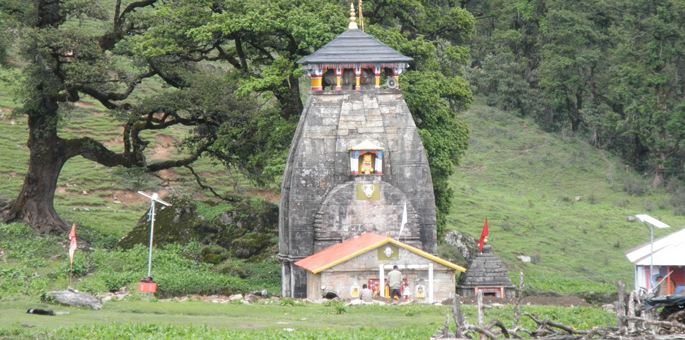
Located in the Mansuna Village of Garhwal Himalayas at an altitude of 3497 m above sea level, Madmaheshwar or Madhyamaheshwar is the abode of Lord Shiva. It is the fourth temple of Panch Kedar pilgrimage circuit where the navel shaped lingam of a disguised Shiva is worshipped. The temple is believed to be built by the Pandavas, the great heroes of the Mahabharata. The temple is located on green meadows above the lofty hill and enclosed by the sky-touching Himalayan mountains from all sides. One can feel the spiritual vibe present in the air once one reaches the temple premise. The temple remains closed from November to April as the temple route turns impossible to access due to heavy snowfall. The idols are then transferred to Ukhimath for daily worship. Water collected from the seat of Madhyamaheshwar contains high spiritual value.
The Trek: Uniana is the base of this trek from where the route passes through Bantoli. From Uniana to Bantoli the trek is moderate whereas Bantoli to Madmaheshwar is a steep accent.
Best Time to Visit: The route to the temple remains open from May to October but May-June and September–October are considered to be the best season for trekking in Madmaheshwar.
Neelkanth Mahadev Temple: Where Edifice Works as Storyteller
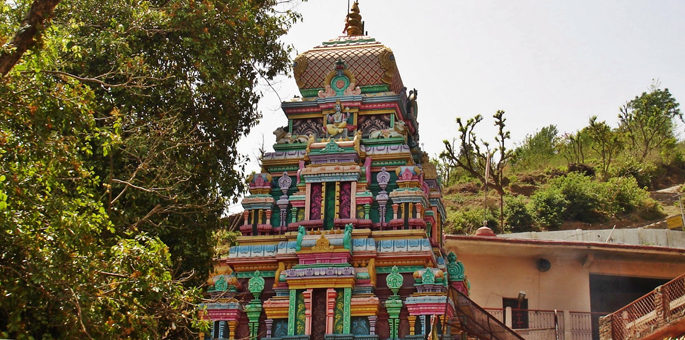
Devbhumi, Uttarakhand presents innumerable options to look for serenity and piousness. Neelkanth Mahadev Temple in Pauri Garhwal District of Himalaya is such a destination where both thrill seekers and devoted souls can find food for their hungry souls. Located at an elevation 1330 m above sea level this is a famous Hindu Pilgrimage site enclosed with dense forest and close to the mountain ranges of Nar-Narayan. The temple is dedicated to Lord Shiva who consumed the blue poison. The temple is adorned with stunning mythological representations, colourful stone sculpture, and eye-catching architectural designs.
The Trek: The trek to Neelkanth Mahadev Temple starts from Ram Jhula which is 22 km long. The trek is exhilarating as one starts approaching towards the temple where the river flows down on one side and lofty mountain stands on the other. It takes around 4 hours to reach the temple premise and the trek is a combination of steep climbing and downwards slopes.
Best Time to Visit: All through the year.
Hemkund Sahib: Reaching a Blissful State through the Bewildering Treks
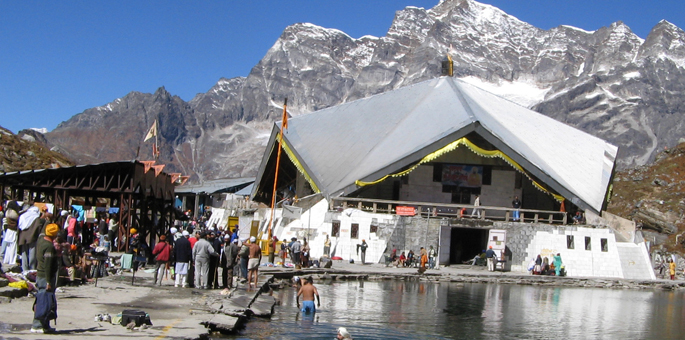
Known to be the highest Gurdwara of the Sikh Community across the world Hemkund Sahib is one of the most significant religious destinations that all members of the Sikh community wish to visit at least once in a life time. Located at an elevation of 4329 m above sea level, this religious spot attracts attention for its scenic location by a crystal clear lake called Hemkund. It is believed that the 10th Sikh Guru, Guru Govind Singhji meditated here at Hemkund for several years. Every year the yatra (pilgrimage) to this temple is opened in the month of May-June and closes by the end of October. Despite its rugged location on a steep hilly region, devotees with full faith visit this sacred spot.
The Trek: The trek starts from Govindghat and leads to Ghangria. It is a 13 km long trek with gradual ascent and requires around 7 hours to accomplish. From Ghangria the trek leads towards Hemkund Sahib. Enchanting waterfall by the side of the trek, thick forest and colourful rhododendron trees make your trekking experience memorable.
Best Time to Visit: July to October is considered to be the best time to visit Hemkund Sahib.
Kartik Swami Temple: Seat of Divine Being amidst Serenity
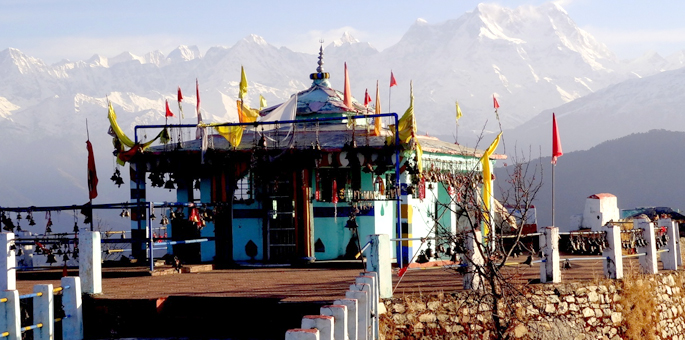
Located in a picture-perfect setting at a height of 3050 m above sea level, Kartik swami temple is a revered Hindu temple in the Indian Himalaya. The temple is dedicated to Lord Shiva and Parvati’s elder son Kartikeya who is known as the commander-in-chief of the deities. The temple stands apart from the other temples for its height and the route leading to the temple premise. The temple is situated near Kanak Chauri Village of Rudraprayag at a distance of around 40km from central Rudraprayag. A stone carved idol of Kartikeya Swami is worshipped here. It is believed that when Kartikeya got defeated by his younger brother Ganesha in a tricky intellectual confrontation, he sacrificed his bones to his Father Shiva out of anger. This is the place where the incident took place.
The Trek: From Rudraprayag to Kanak Chauri is a 38 km long motorable route. The distance from Kanak Chauri to Kartik Swami temple is around 2.5 km and one needs to trek from Kanak Chauri. The track is quiet and lush greenery accompanies till the end.
Best Time to Visit: October to June is the best time for trekking to Kartik Swami Temple.
Kailash Mansarovar: Must See Place before a Hindu Dies
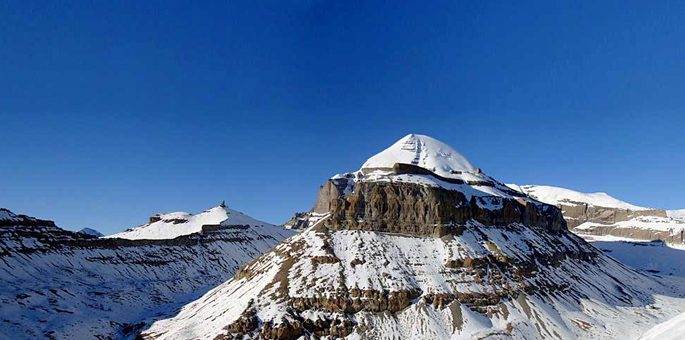
The abode of Lord Shiva and his beloved wife Parvati, Kailash Parvat is a significant religious spot for Hindu, Jaina, Buddha and Bons. Giant Indian rivers like Karnali, Brahmaputra and Sindhu originate from surrounding areas of Mount Kailash. Devotees from across the country fly to this distant land for penance. While Mount Kailash forms a part of the Trans-himalaya and looks breathtakingly beautiful for its snowclad peaks, Mansarovar looks stunningly impressive for its crystal clear blue water. The religious souls dream to visit this place at least once in a life time. It is believed that the water of Mansarovar cleanses the sins, and devotees taking a dip on its water achieve Moksha.
The Trek: A motorable route is found till Tarchhen/Darchhen. The journey to the Land of Gods starts from Yama Dwar and stops at Dhira Puk and takes around 7 to 8 hours to complete. Next day’s halt is at Zuthul Puk which is a 22 km long trek and takes around 7 to hours to complete. Zuthul Puk to Tarchen is an easy trek of 14 km and takes around four hours.
Best Time to Visit: May to October is the best time for revered Kailash Mansarovar Yatra.
Amarnath Temple: Where Pilgrimage is Synonymous to Adventure
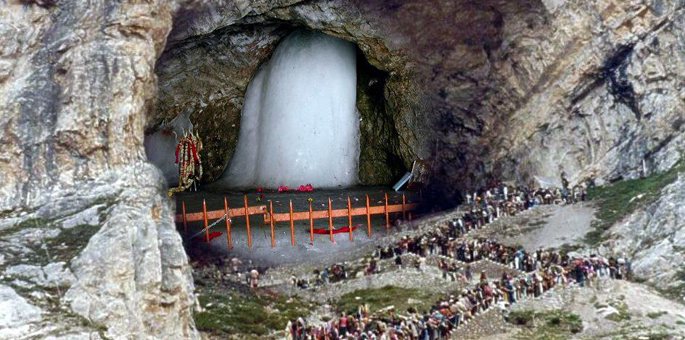
One of the most significant Hindu Temples in the world, Amarnath is not only a religious destination but a nature’s wonder in the real sense. The most surprising element of this temple is the Ice Lingam of Shiva that forms naturally with frozen ice. The temple is located on a gorge in the outskirts of Lidder Valley (Jammu and Kashmir) at an altitude of 3,888 m above sea level. It is said that with the changing phase of the moon the lingam shrinks and enlarges and reaches the maximum height during summer when pilgrimage starts. According to holy Hindu scriptures, here in this place Shiva shared the secret behind immortality and the creation of this universe with Parvati. Shiva chose this isolated place so that no one could come to know about the secret of immortality. But a pair of newly born pigeons could listen to that conversation and they became immortal and it is reported by various pilgrims that a pair of pigeon is still found on this high altitude and chilled mountain range.
Trek: For the trek starting from Pahalgam, Chandanwari is the base camp and proceeds through Naga Koti – Sesh Nag – Mahagunstop – Panjtarni – Sangam and finally reaches the cave. However, the new route to the cave starts from Baltal and via Domail and Barari reaches Sangam.
Best Time to Visit: Though, summer is the best time for Amarnath Yatra, but the pilgrimage is regulated by the government of India and it starts only when the route is cleared completely from snow-cover.
The Himalaya, the plot of innumerable myths and mysticism attracts each type of visitors from across the globe. Despite being a paradise to the adventure hungry souls, this gigantic mountain range houses several temples which are believed to be the doorway to the Moksha or liberation. So, choose your pick and plan to head towards the land where serenity embraces even the most challenging route.
Published: 25 Aug, 2014
Tour My India is among the top notch online travel organizations, which has been recognized by the Department of Tourism, Government of India. Owing to its rich experience in the travel domain, it has earned specialization in offering all types of tours. Right from an excursion on the rugged terrain of hilly areas, to pilgrimage on holy places, Tour My India has quality experience and expertise in making all the arrangements for a safe and memorable trip.


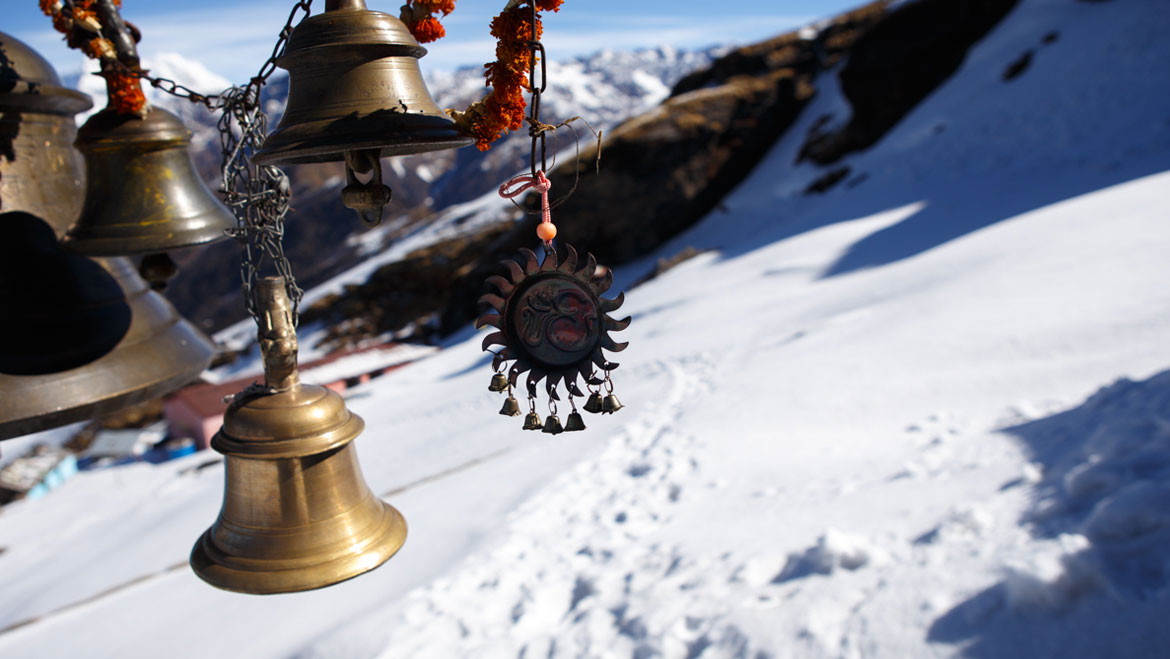
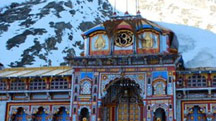 11 Nights / 12 Days
11 Nights / 12 Days 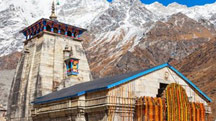 7 Nights / 8 Days
7 Nights / 8 Days 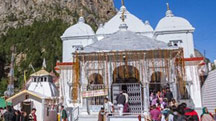 6 Nights / 7 Days
6 Nights / 7 Days 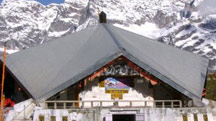 6 Nights / 7 Days
6 Nights / 7 Days 










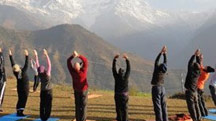 6 Nights / 7 Days
6 Nights / 7 Days 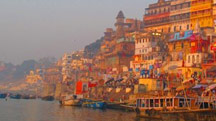 15 Nights / 16 Days
15 Nights / 16 Days 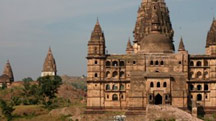 13 Nights / 14 Days
13 Nights / 14 Days 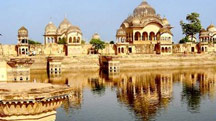 16 Nights / 17 Days
16 Nights / 17 Days 








